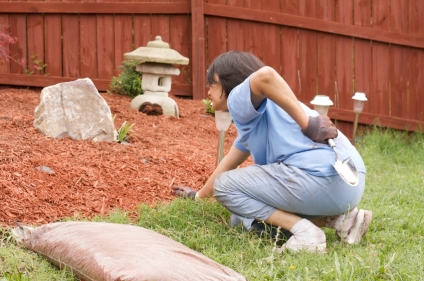Orthopedic Rehabilitation is just one tool available to help you get back to a healthy and active lifestyle. Orthopedic rehabilitation is a form of therapy with a purpose of minimizing the effect on muscles, bones, ligaments and tendons at various stages of each disease and condition. Orthopedic physical therapists in the rehab help you to regain use of your limbs and incorporate assistive devices by diagnosing and treating injuries. After a surgery or severe injury orthopedic rehabilitation can enable you to perform your daily activities. Orthopedic rehabilitation can help people to get back on track when they are experiencing a malfunction nearly anywhere in their system and rehabilitation programs have been used in different capacities for different challenges with new methods of care plans to improve existing conditions.
Orthopedic Rehabilitation after Surgery
Patients often work with PTs after surgeries like:-
- Heart Surgery
- Knee Replacement
- Knee Arthroscopy
- Hip Replacement
- Cancer Surgery
Orthopedic Rehabilitation after Acute Injury- a single Trauma can result in acute injury. If you sprain an ankle, tear your meniscus or herniate a disk Orthopedic Rehabilitation helps to:-
- Manage pain & swelling
- Rebuild your strength
- Function with the weight bearing restrictions your doctor recommends
- Flare up your routine activities
Rehabilitation after Chronic Injury- Prolonged injury is common in sports person, can damage your body by overusing the same muscle groups or joints and pain can continue after the injury such as:-
- Jumper’s knee
- Swimmer’s Shoulder
- Tennis Elbow
- Carpal Tunnel Syndrome
Orthopedic Rehabilitation helps to improve your health by Physical therapy programs with the help of skilled Physical therapists. Here are some helping points that help you to avoid costly hospitalization;-
Maximize your movement with Quality of Care:
Recovery is necessary in order to strengthen muscles after injury or overuse. Immobility can affect the length of your muscles. Experts in rehabilitation have set a goal to achieve your body to maintain optimal body activity. Rehabilitation helps in physical, psychological, vocational and social capacities. Pain free movement is crucial to your quality of life, your ability to earn a living and your independence. Physical therapists are movement experts. They can reduce fatigue which can help you to continue physical activities and increase confidence.
Restoring Normal Movement in Joints with Highly Specialized services:
Physical Therapists work collaboratively with their patients. They design treatment plans for each person’s individual goals, challenges and needs. Rehabilitation can even increase the effectiveness of your medications. Set of exercises get your body moving and help with balance, posture and joints. While there will be normal discomfort that comes with a good workout which is a great sign of comeback and feels stronger than ever. Rehab Facility could consist of energy techniques, problem solving skills and working out parts of the body so that your chances of paralysis or impairment are lower.
Promotes Circulation & Boosts Memory and Cognitive Skills
Older adults have high chances of cell deterioration, joint and muscle stiffen when they are not used as a result people start shrinking by age that cause problem walking, rising from a chair. To maintain a flexible range of motion and circulation, an orthopedic Rehab training program makes you stronger enough to keep your blood pumping. Without proper blood flow risks of blood clot increase. Brain cells also deteriorate with age or stroke. Rehabilitation provides services to senior citizens in particular to increase brain function. Memory loss is protected by solving puzzles and reading books are the right moves to focus on sensory stimulation and simplified exercises.
Reduce Pain & Need for Pain Medication
getting Older, Arthritis and joint pain are natural parts of life. That doesn’t mean you should stop, to treat your body, move your body regularly with the help of your PTs in Rehab can help to prevent pain as you age and further prevent damage. In rehabilitation alternative therapies to joint pain can be beneficial. Severe Injuries of all kinds essential to include in Orthopedic Rehabilitation in order to recover from physical injury caused by brakes, Tears, twists and so on. Inflammation in knees, ankles blocks to move freely so make sure to exercise regularly as professionally planned for you. Good orthopedic Rehabilitation and Physical Therapy can eliminate pain. Therapists massage the sensitive areas where the tissues become stiff, by reducing stiffness through nerve stimulation leading to less pain and getting patients back to normal level of health.
Avoid Surgery- People tend to do PT as something you do after surgery, before you undergo expansive and invasive surgery read about Physical rehabilitation. It is as effective as surgery. At innovative pain and wellness including muscle tear, Knee Osteoarthritis, Rotator cuff tears, spinal stenosis, degenerative disk disease etc., Total knee replace or total hip replacement are patient’s high probabilities to face complications after surgery. One meeting with a Physical therapist before you go for surgery may become a surprising result for you or may not need surgery. Rehabilitation programs help by PT to restore function without going under the knife. Physical therapists are experts in functioning your body without surgical intervention.
All in All if you don’t receive physical Rehabilitation after acute, chronic injury or surgery your injury may take longer to heal. From improving recovery time and shortening hospital stays to improving function and healing of soft tissue injury Orthopedic Rehabilitation is a vital key returning you to activity. In Rehabilitation you will work with a PT you trust and feel comfortable with when you have a complex orthopedic. In Specific conditions your rehab center offers condition specific care from highly trained. Real life patient outcomes and success rates give you an idea of exactly how effective a rehab center’s treatment programs are.
Contact Alliance Physical Therapy






 What do you understand by Foot Drop?
What do you understand by Foot Drop?
